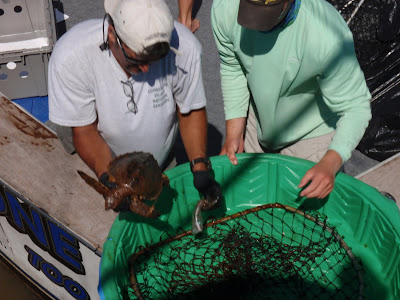
Biologists with the Red Wolf Recovery Program occasionally target capturing a juvenile red wolf in a trap, in which case it can be impossible to safely and effectively fit the young wolf with a radio telemetry collar. If the collar is fitted for the young wolf's current size, the wolf may continue to grow causing the collar to become too tight, and possibly even embed itself into the wolf’s neck. If the collar is attached too loose, the wolf may slip out of it and radio contact will be lost. The solution? Abdominal radio transmitters.

Three young siblings, born in the spring of 2010, were recently captured when they were just seven months old. Even for a seven-month-old red wolf pup they were a bit on the small side, weighing in at just over 30 pounds each. An adult red wolf can weigh anywhere from 45 pounds to 85 pounds. Knowing that they could still put on a considerable amount of weight before reaching adult size, we decided to implant them with abdominal transmitters rather than fit them with a radio telemetry collar.

The young wolves were transported to a local veterinarian, where they were sedated and prepared for surgery. A sterilized transmitter was inserted in the abdominal cavity of each wolf through a small incision. Each transmitter emits a pulse signal at a unique frequency which enables biologists to track the animal. After a short recovery period, the pups were transported back to their natal territory and released near their parents. -- Ryan

































